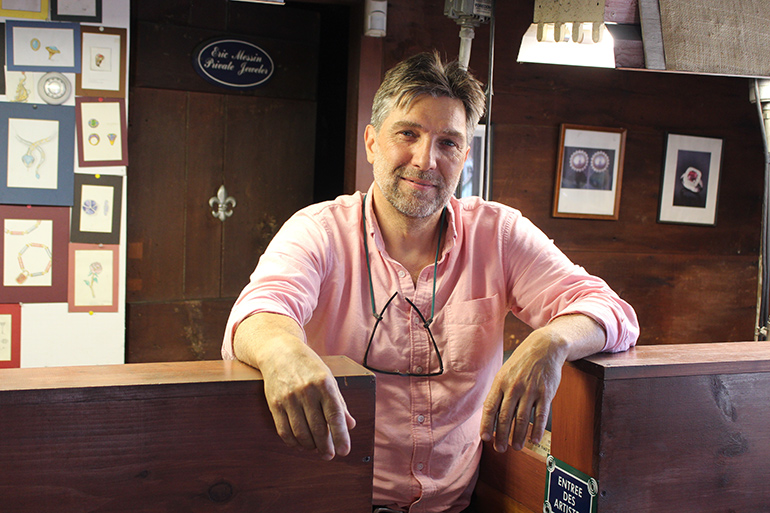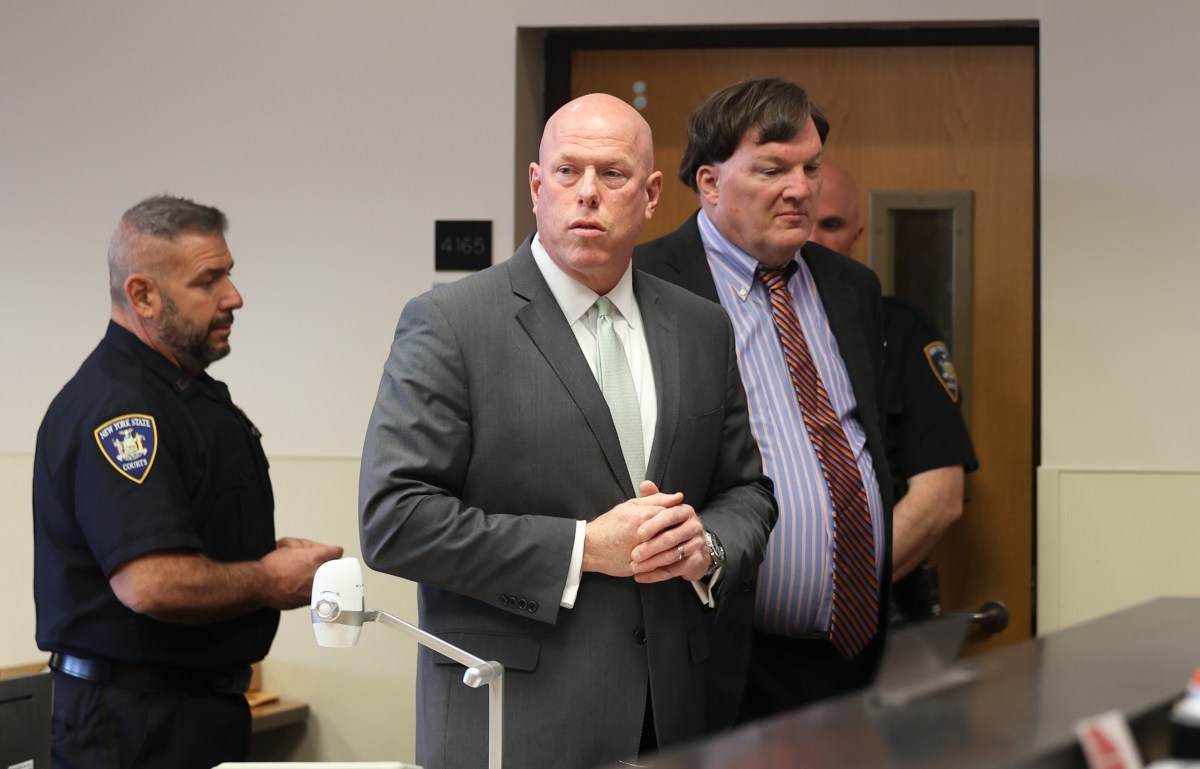Master Craftsman: Eric Messin, Jeweler, Silversmith

The ability to create fine, handcrafted pieces requires a combination of innate talent, dedication and years of training, but true standout artisans often bring a secret ingredient to this time-honored formula.
For custom jeweler and silversmith Eric Messin, working within Southampton Historical Museum’s Pelletreau Silver Shop might be an essential part of the mix. At the same time, his presence keeps the centuries-old structure’s spirit alive as he continues its purpose and lineage that began when young Elias Pelletreau first used it as a silver shop in 1750.

“I used to have a business across the street above the cheese shop on the second floor,” Messin says, explaining how his initial plan was to create a salon-style jewelry shop catering to a wealthy clientele, meeting directly with customers for consultations on custom rings, necklaces and other wearable works of art—all made on premises. “In Southampton, nobody walks up to the second floor, so it wasn’t really working out, and I decided to take another job back in the city on Madison Avenue because it kind of took a toll on me for a couple years,” Messin recalls, noting that he returned to Manhattan in 2003. Luckily for the Southampton community, fate had other plans.
“The Historical Museum found out I was up there [before I left] and they said, ‘We have this building on Main Street that’s rotting out, that’s costing us a lot of money. Is that something you’d be interested in taking over under the umbrella of the Historical Museum?’” The jeweler couldn’t believe his luck. He was already well aware of the Pelletreau shop and had been eyeing it for years.

“The funny thing is, when I worked there [in Southampton], I used to walk around the corner to the Blue Duck Bakery for my lunch, and I used to walk by here. This place was completely boarded up, but there was a sign that said Historical Museum,” Messin continues. “I’m like, oh, this would be so ideal, but it’s a historical silver shop, it’s not something that can be transformed into a business. So when they called me, I’m like, ‘Yeah, definitely, I’m interested.’”
Messin moved into the diminutive colonial building in 2006 and has operated his jewelry shop there ever since. “I’m running my own business inside the historical institution, basically,” he says. “We preserve the space the way it is. I can’t do major changes here, and we still use it as a silver shop, as a jewelry shop, and I teach classes where all the proceeds go to the museum, so it’s really a win-win—for the museum to have this place open and have people visit and participate in the history of the locale, and at the same time it works for me to have a space in a region that is very affluent.”

While Messin is not making colonial pieces in the style of Pelletreau, he’s acquired a deep knowledge about the man, and has even lectured about his unique relationship with the famous silversmith. Like Pelletreau, who was from a family of French Huguenots, Messin hails from France. He came to the United States in 1983 and apprenticed with a French jeweler in Philadelphia before moving to New York City to begin his career.
“I worked for a lot of the high-end houses on Fifth Avenue, on Madision Avenue—anything from high end, to young designers to mass production stuff, model making for companies that produce in Hong Kong or in Singapore—so I’ve seen the entire spectrum of the industry,” Messin says, describing his life before moving to the Hamptons. “I used to come out here on weekends, but the last thing I wanted to do was drive back on Sunday night in the traffic,” he explains, noting that his weekends began stretching to Monday mornings, and then longer and longer before finally moving to the Hamptons full-time.

Now fully settled for more than a decade, Messin has built a reputation for his ability to craft incredible creations from silver, gold and platinum, usually highlighted by precious or semi-precious stones. His expertly rendered drawings cover tables and hang on the shop walls, demonstrating Messin’s ability to translate customers’ ideas or his own imaginative designs into reality.
“I mostly do custom orders,” the jeweler says. “My style is a little bit eclectic. My natural tendency is to go toward things that are figurative but kind of ethereal. Dare I say it, like angelic or things that remind you of a realm that is not quite grounded—I do fairies, a lot of nature-inspired things. That’s what comes most naturally to me.”

Messin says Pelletreau mostly did commissions, though he also made jewelry. “He would do sets of spoons and forks, and flatware, silverware, hollowware. That was more his thing. And at the time jewelry was very different. They would have buttons for the coat that were made of gold. That was the jewelry of the time. Shoe buckles, part of the clothes and attire we don’t use anymore,” Messin explains of his distant predecessor. “That always fascinates me, too, because it’s such a throwback in time. And for me to be in this space, it allows me to stop the modern world back in 1600,” he says. “I come in here and I feel secluded. I feel insulated from the chaos of the crazy world out there. I get to slow down automatically by walking in here. It allows me to be more creative, to be more introspective. I have wonderful windows.”
Learn more about Eric Messin and the Pelletreau Silver Shop at ericmessin.com or southamptonhistory.org.

READ MORE MASTER CRAFTSMAN PROFILES
Master Craftsman: Brian Schopfer, Grain Surfboards
Ben McHugh, Framer, Hampton Photo Arts
Nico Yektai, Art Furniture Maker
John Battle, Metalworker, Sculptor
Hans Van de Bovenkamp, Sculptor
Dereyk Patterson, DP Knives, Fine Cutlery
Jean-Michel Andriot, Fine Backgammon Boards, Studio Jean-Michel
Paul Vogel, Bookbinder, Vogel Bindery
Helen Gifford, HelenBilt Lighting Design
Gary Anderson, Tool & Die Maker, Machinist, Fabricator
Heather Dunn-Kostura Faux Finishes
Richard Cohen and Jim Kutz, Rockwater Ltd.
Laura Sanatore, Interior Designer, Hampton Design
Joe Kline & Curt Dahl, Joseph & Curtis Custom Wine Cellars
Frank Dalene, Custom Contractor, Green Innovator
Lori Guyer & John Mehrman, White Flower Farmhouse
Maximilian Eicke, Furniture Designer



